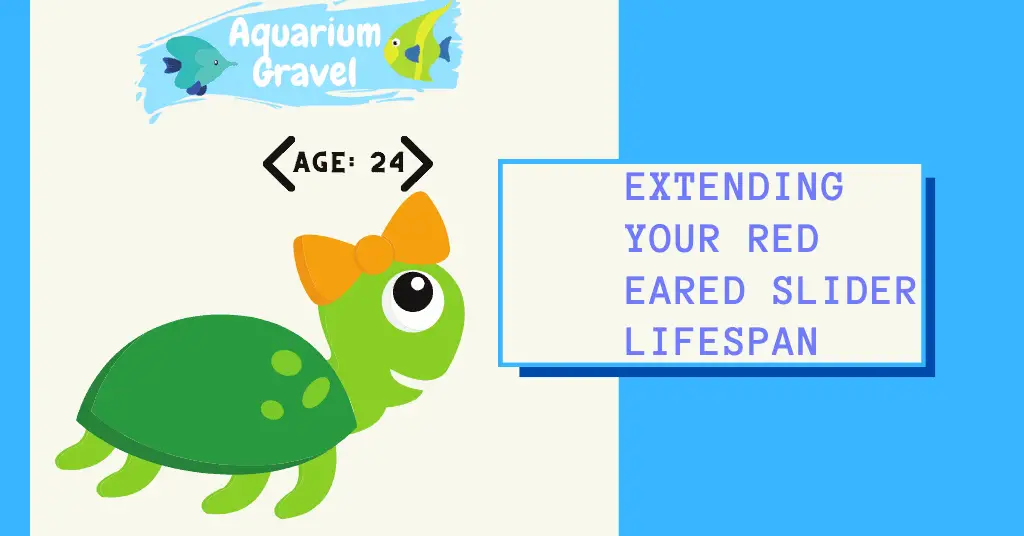Last Updated on July 14, 2021 by cmoarz
Are you looking for a way to keep your red eared slider alive longer?
The average lifespan of a captive red-eared slider is 10-15 years. Did you know that by following these simple steps, we can actually extend that to 20 years and in some cases even push 25+?
You will be able to keep your pet happy and healthy for much longer than the average lifespan. Follow these easy steps and watch as they live an extra 5-10 years!
Now that I have your attention, keep reading if you want more information on how to extend your red-eared slider’s life span!
Step 1: Getting the temperature(s) right
Red eared sliders, Also known as trachemys scripta elegans are temperate species of turtle. They enjoy an enclosure temperature of 75 to 85degrees Fahrenheit.
Most people don’t know this, but red-eared sliders actually require 2 sets of temperatures in the same tank. The regular water temperature, as stated above, and a basking lamp temperature.
The area under the basking light should be 58 to 95 degrees Fahrenheit which is slightly higher than their ambient water temperature requirements.
And that’s our first step to increasing your turtle’s lifespan, If you don’t have a basking light, go get one!
Now that we’ve got the water and basking lamps’ requirements out of the way, let’s move on to step 2.
Step 2: Your turtle’s diet
Your red-eared slider is an omnivours reptile. They require protein in their diets as well as a variety of greens. Stay away from high starch foods and stay away from any food with salt or lots of fat.
A red-eared slider’s proper balanced diet consists of 25% live protein (Fish, insects, etc), 25% commercial turtle pellets, and the last 50% will consist of various sorts of vegetables, and treats. This is the rule of thumb you should try to follow as closely as possible.
Types of vegetables and other plant matter include:
- Lettuce and other leafy greens
- Kale
- Watercress
- Carrots
- Mustard greens
- Bell peppers
- Squash
- Green beans
- etc
Avoid overly acidic foods such as tomatoes, onions, citrus, etc.
It’s really important you take care to avoid fatty foods and salty foods. These can cause obesity in your slider and salt can cause kidney failure.
Kidney failure is a condition that can manifest in turtles due to salt consumption. This is because salt causes toxicity in the kidneys which, in turn, causes kidney failure. Animals that have kidney damage or previous kidney problems are more likely to develop kidney failure if they have access to high salt food sources and/or environments.
So it’s vital to keep sodium levels down when you’re trying to increase the life expectancy of your turtles.
The reason I am mentioning this is that it’s often overlooked. Things like mealworms aren’t proper to always be feeding your turtle as a staple diet, and will just lower the life expectancy by a fair margin because of how fatty they are.
Step 3: Your pet turtles enclosure
We’ve already briefly talked about the heat lamp, But let’s get into that a bit more.
If you’ve never heard of heat lamps before, they are a device that produces heat to provide warmth for reptiles.
Heat lamps consist of a light bulb that emits infrared radiation at the desired temperature. The infrared radiation from the bulb is transferred to the water in the tank by convection and then to air via natural drafts and helps keep your tank warm.
Your pet turtles will also sit underneath the heat lamp to collect heat in their bodies. Turtles are cold-blooded and do not produce heat on their own.
It’s important to keep your slider’s ambient temperature at 75 degrees Fahrenheit or higher with a basking area temperature of 95 degrees Fahrenheit or higher for them to be healthy and happy!
The aquarium itself should be a 20-gallon tank minimum. A 10-gallon tank won’t cut it, and you should even consider going higher into a 40 or 60 range gallon tank.
The larger the tank is the better it’s going to be for the slider and the longer we can expect its lifespan to be.
Step 4: Regular health checkups
If your turtle isn’t registered at your local reptile veterinarian, I suggest you get them there.
What you need to do is check for proper overall health and make sure everything is in working order with your pet turtle. Once a year or as often as possible, take your turtle to the reptile vet to ensure that they are healthy, and if not, find out what’s going on so you can remedy it before it gets too serious.
Common turtle ailments include:
Respiratory infections or pneumonia
Digestive problems
Skin problems such as scutes discoloration, redness or sores. This is common in pets exposed to UVB lighting. It can cause dehydration which weakens the sliders immune system and makes them susceptible to bacterial infection. They also tend to bask too long in the basking area leading to excessive heating of their skin and burning, then certain fungi that live on turtle skin will overgrow rapidly causing infections on a regular basis.
Generally, this won’t happen in a healthy turtle. But how will you know your turtle is healthy without having regular semi-annual or annual checkups with your vet?
Red-eared sliders have a pretty good average lifespan of 15 years, but this isn’t set in stone. You can increase this average life expectancy by following the guidelines listed above!
About
Owner of AquariumGravel.com and also owner of actual Aquarium Gravel believe it or not! ;). Setting up beautiful aquarium sceneries and habitats since I was very young. Enjoy!
- Web |
- More Posts(290)

